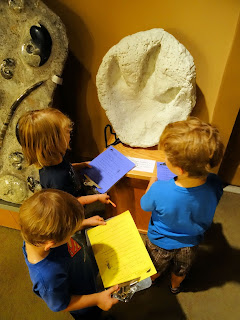Only
120,000 visitors visit Congaree National Park annually, as compared to the more
than 9 million Great Smoky Mountains National Park gets in a year. As if we needed
another reason to visit this ancient forest full of native hardwood trees, home
to “champion trees,” the largest known survivors of their species. Our previous visit coincided with a serious downpour, during which we explored the Visitors
Center and not much else. This trip (following right on the heels of our two
days in Dreher Island State Park) saw sunny, though hot weather, but we still
debated postponing our visit before even leaving the car – the black flies in
the parking lot were intimidating (although thankfully mostly contained to the
entrance and visitor center area)!

Congaree
envelops the largest tract of old growth bottomland hardwood forest left in the
US, the 26,546-acre National Park escaping being logged like much of the
surrounding area due to intermittent flooding. Historically, over one million
acres in South Carolina were covered with floodplain forest, but in less than
50 years they were logged and cleared, the surviving remnants drowned by
reservoirs. After a campaign by the Sierra Club and local activists, Congaree
Swamp National Monument was established in 1976 protecting the forest, although
it was 2003 before it was renamed a National Park.

The
best way to see the enormous forest, 57% of which is designated wilderness
area, is by kayak or canoe. We were on foot, and therefore opted for the
self-guided boardwalk tour beginning at the Harry Hampton Visitor Center. From
chatting with other visitors we were disappointed to learn that the elevated
boardwalk section between Weston Lake and Sims Trail was closed due to storm
damage, and although this slightly extended the length of our planned hiking
loop from 2.4 to 2.7 miles it was still an impressive tour.

The
informational booklets provided at the visitor center are extensive and varied.
The kids enjoyed searching for trees, animals and other things listed on the Kids in Parks Congaree Scavenger Hunt Track Trail, while the adults learned a few new things from the guided
boardwalk tour; the brochure provides interesting factoids corresponding to
numbered placards dotting the trail (which the boys exuberantly spotted and
tracked, making sure we didn’t accidentally pass one up). For example, #11
involved a former state champion tree, a 150 foot tall loblolly pine. Nearby
was another loblolly (#10) that could have been 200 years old; it fell during
Hurricane Hugo in 1989. And somewhere is a loblolly (can be seen on the “Big
Tree Hike”) that measures 170 feet tall and 15 feet in circumference, one of
the park’s champions.

In
comparison there is a bald cypress in the park over 27 feet in circumference,
the wide margin due to the buttressed base. We learned about cypress knees,
switch cane, water tupelos and the area’s rich soil, not much escaping our
notice including snakes, lizards, turtles and interesting insects. On the last
portion of the loop we even flushed a deer, the white tail quickly disappearing
from view into the dense vegetation.°
At the
far end of the loop we found the elevated viewing platform for Weston Lake. Once
a bend in the Congaree River, Weston Lake is now an oxbow lake. Although it is
slowly filling in with clay and organic debris, the lake is home to freshwater
turtles such as the yellow-bellied slider and common snapping turtle, as well
as catfish, bass and alligator gar.
A
system of hiking trails fan out from this end of the boardwalk, for those
visitors looking for a more intensive glimpse into the Congaree forest. With
names like “Kingsnake Trail” I was sorely tempted, but we were content with
retracing our steps to the Sims Trail and taking that back north in lieu of the
low boardwalk.
 |
| Can you spot the alligator gar? |
With a
dozen different walks and tours available including the Big Tree Hike, Guided
Canoe Tours and night hikes, there are plenty of ways to immerse yourself in
this primitive world while learning all about the floodplain ecosystem. We
emerged back at the Visitor Center tired and sweaty, but despite the battle
with the black flies en route back to the car it was a wildly popular hike with
kids and adults alike. It’s really just a matter of time until we return for
another exploration of Congaree – maybe this time by boat?























































